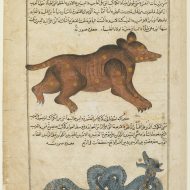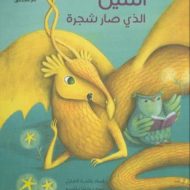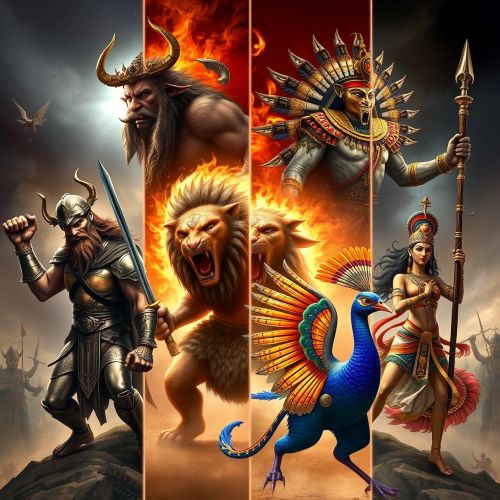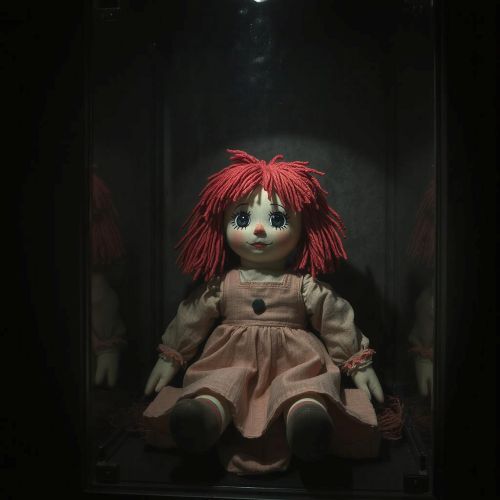Al-Tinnin : The Water Dragon
Listen
At a glance
| Description | |
|---|---|
| Origin | Arabian Mythology |
| Classification | Animals |
| Family Members | Anat (Sister) |
| Region | Israel |
| Associated With | Sea, Chaos, Evil |
Al Tinnin
Introduction
Al Tinnin, a name steeped in both power and mystery, is a water dragon that finds its origins in Arabian mythology. This enigmatic creature not only graces the pages of folklore but also occupies a prominent position in the realms of astronomy and astrology. Within the annals of ancient Arabian lore, Al Tinnin occupies a distinctive and revered role, weaving itself intricately into the vibrant tapestry of Arabian mythology.
Physical Traits
Al Tinnin’s portrayal typically aligns with that of a serpentine entity, often featuring a distinctive double tail. This physical form mirrors the symbolism of chaos and malevolence prevalent in Canaanite and Hebrew mythology. In the realm of astronomy, Al Tinnin finds its association with the Draco constellation, reinforcing its serpentine attributes.
In the world of myth, Al Tinnin is no ordinary being; it boasts an extraordinary and captivating appearance. Described as a colossal serpent of unfathomable proportions, it is rumored to be capable of encircling entire mountains with its massive, sinuous body. Its depiction often showcases glistening scales that catch the desert’s radiant sunlight, while its eyes possess a mesmerizing, piercing gaze.
Family
The mythology encompassing Al Tinnin remains somewhat ambiguous when it comes to its familial connections. Nevertheless, it is frequently intertwined with other aquatic behemoths like Leviathan and Rahab in Jewish mythology. Scholars and storytellers have engaged in extensive debates regarding Al Tinnin’s lineage and family ties, with no definitive conclusions.
Within Arabian mythology, divergent narratives present Al Tinnin in contrasting lights. In some versions, it assumes the role of a guardian spirit, safeguarding ancient oases and revered sanctuaries, earning the status of a benevolent deity. However, in alternative tales, it emerges as a malevolent and cataclysmic force, sowing chaos and devastation in its wake.
In many interpretations, Al Tinnin shares a close affiliation with the ancient Arabian dragon god, Bahamut. These two mythical beings are at times regarded as siblings, further underscoring the duality inherent in their mythological roles. Bahamut is typically revered as a harbinger of creation and equilibrium, while Al Tinnin embodies the antithesis, representing the forces of chaos and destruction.
Other names
Al Tinnin is a mythological entity with diverse names across different cultural contexts. In Hebrew, it is recognized as “Tannin,” while in Syriac, it goes by the name “Tannina.” The Akkadian designation for this creature is “Dannina.”
Powers and Abilities
Al Tinnin stands as an emblem of malevolence and disorder, a formidable sea monster imbued with extraordinary might. Within Canaanite mythology, it is portrayed as one of the loyal servants of Yam, the sea god, and is known to have met defeat at the hands of Ba’al or was bound by his sister, Anat. Additionally, the Hebrew Bible references Al Tinnin as one of the creatures divinely created by God on the fifth day as part of the Genesis creation narrative.
Modern Day Influence
The enduring influence of Al Tinnin transcends the boundaries of mythology, leaving its mark on the contemporary world. Notably, the Israeli Navy has chosen to name three submarines after Tannin, an homage to the creature’s symbolic strength and power. In the realm of modern Hebrew usage, the term “tanin” carries the meaning of “crocodile,” showcasing the lasting impact of this mythological entity on language.
Furthermore, within the sphere of art, Al Tinnin’s image frequently surfaces in modern interpretations of Arabian mythology. Artists skillfully infuse the serpent’s alluring physical attributes, such as its gleaming scales and enchanting eyes, into their creations. These artworks pay homage to this ancient creature, ensuring that its presence remains alive and well in the contemporary artistic landscape.
Related Images
Frequently Asked Questions
What is lorem Ipsum?
I am text block. Click edit button to change this text. Lorem ipsum dolor sit amet, consectetur adipiscing elit. Ut elit tellus, luctus nec ullamcorper mattis, pulvinar dapibus leo.
What is lorem Ipsum?
I am text block. Click edit button to change this text. Lorem ipsum dolor sit amet, consectetur adipiscing elit. Ut elit tellus, luctus nec ullamcorper mattis, pulvinar dapibus leo.
What is lorem Ipsum?
I am text block. Click edit button to change this text. Lorem ipsum dolor sit amet, consectetur adipiscing elit. Ut elit tellus, luctus nec ullamcorper mattis, pulvinar dapibus leo.
What is lorem Ipsum?
I am text block. Click edit button to change this text. Lorem ipsum dolor sit amet, consectetur adipiscing elit. Ut elit tellus, luctus nec ullamcorper mattis, pulvinar dapibus leo.
What is lorem Ipsum?
I am text block. Click edit button to change this text. Lorem ipsum dolor sit amet, consectetur adipiscing elit. Ut elit tellus, luctus nec ullamcorper mattis, pulvinar dapibus leo.







